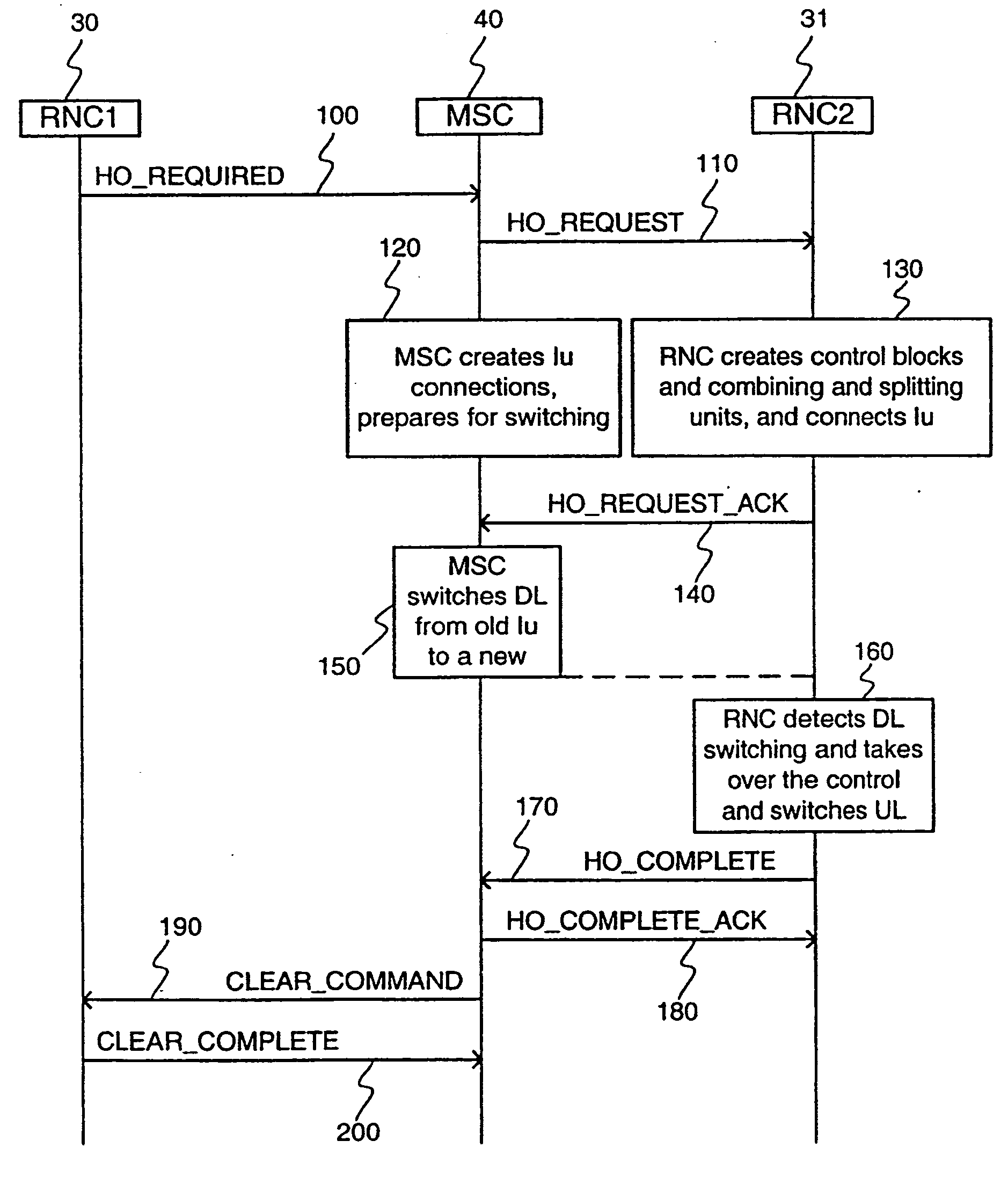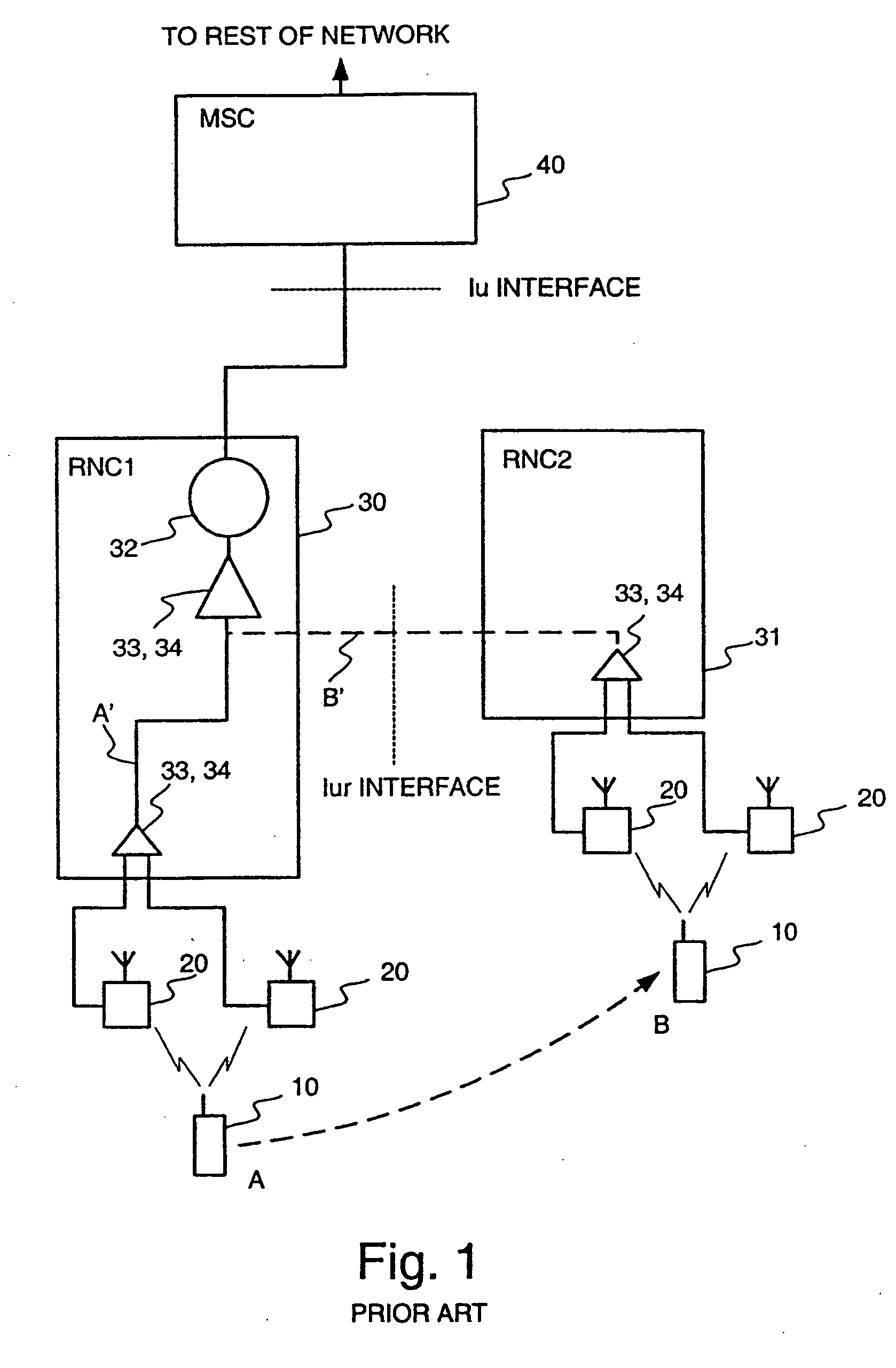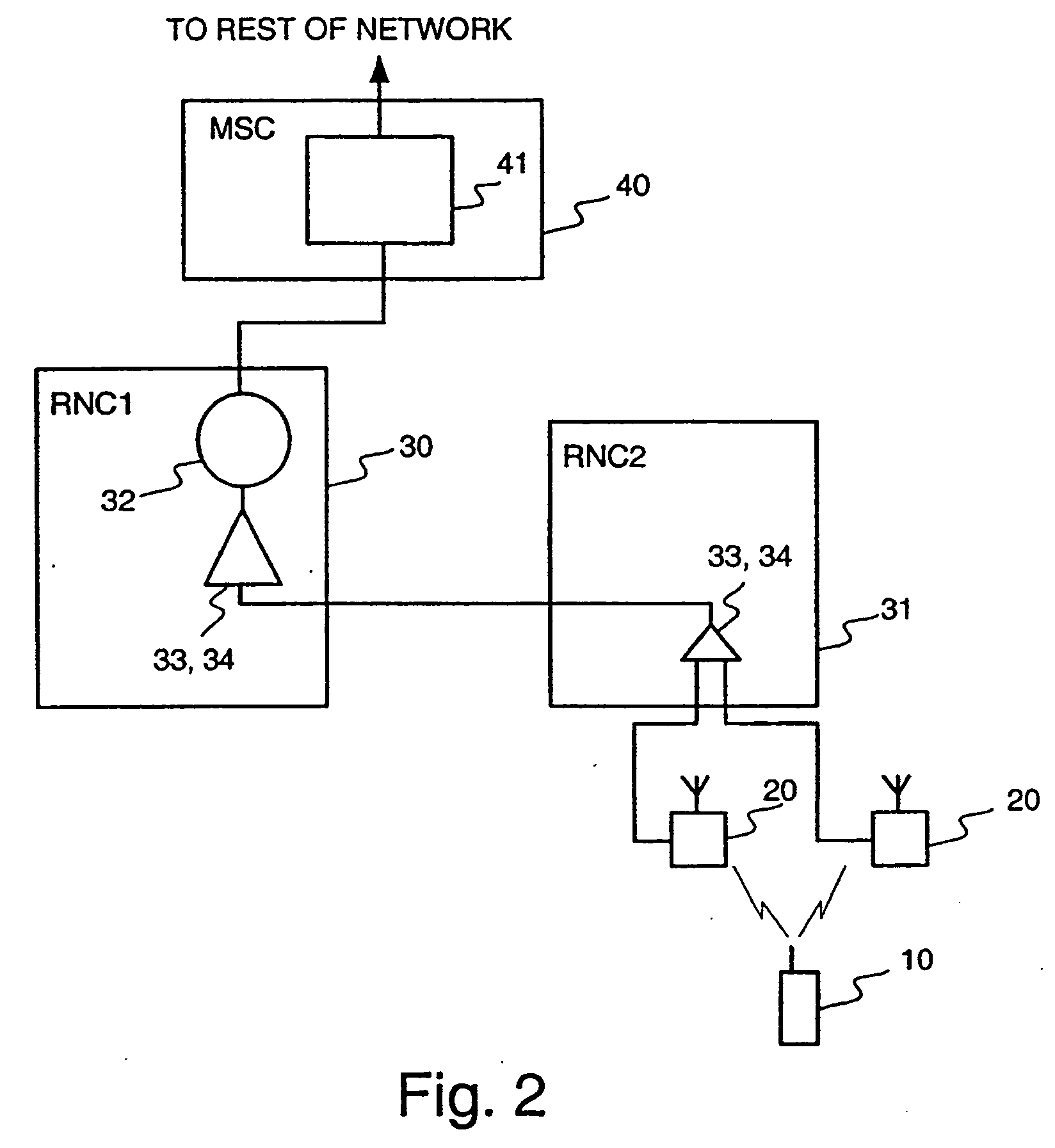Method for controlling connections to a mobile station
a mobile station and connection technology, applied in the field of transmission link optimization, can solve the problems of increasing the load on the network, increasing the delay created by the link, and increasing the delay,
- Summary
- Abstract
- Description
- Claims
- Application Information
AI Technical Summary
Benefits of technology
Problems solved by technology
Method used
Image
Examples
Embodiment Construction
[0022] An advantageous embodiment of the invention is described in the following with reference to FIGS. 2, 3, and 4. FIG. 2 shows an initial situation, where a mobile station 10 (MS) has connections to base stations 20, which are controlled by another RNC 31 than RNC 30 that controls the connections to the mobile station. In this starting situation, RNC1 30 controls the connections to the mobile station, while the connections are routed via RNC2 31, which controls the base stations, in whose area the mobile station is currently located. This situation may arise, for example, when the mobile station initiates connections while located within a cell controlled by RNC1 30, and later moves away from that cell to another, which is controlled by RNC2 31. A mobile switching center 40 (MSC) forwards the connections from the rest of the network (not shown in FIG. 2) to the RNCs. The RNCs further comprise combining and splitting units 33, 34. Combining units 33 combine uplink signals belongi...
PUM
| Property | Measurement | Unit |
|---|---|---|
| length | aaaaa | aaaaa |
| frequency | aaaaa | aaaaa |
| area | aaaaa | aaaaa |
Abstract
Description
Claims
Application Information
 Login to View More
Login to View More - R&D
- Intellectual Property
- Life Sciences
- Materials
- Tech Scout
- Unparalleled Data Quality
- Higher Quality Content
- 60% Fewer Hallucinations
Browse by: Latest US Patents, China's latest patents, Technical Efficacy Thesaurus, Application Domain, Technology Topic, Popular Technical Reports.
© 2025 PatSnap. All rights reserved.Legal|Privacy policy|Modern Slavery Act Transparency Statement|Sitemap|About US| Contact US: help@patsnap.com



